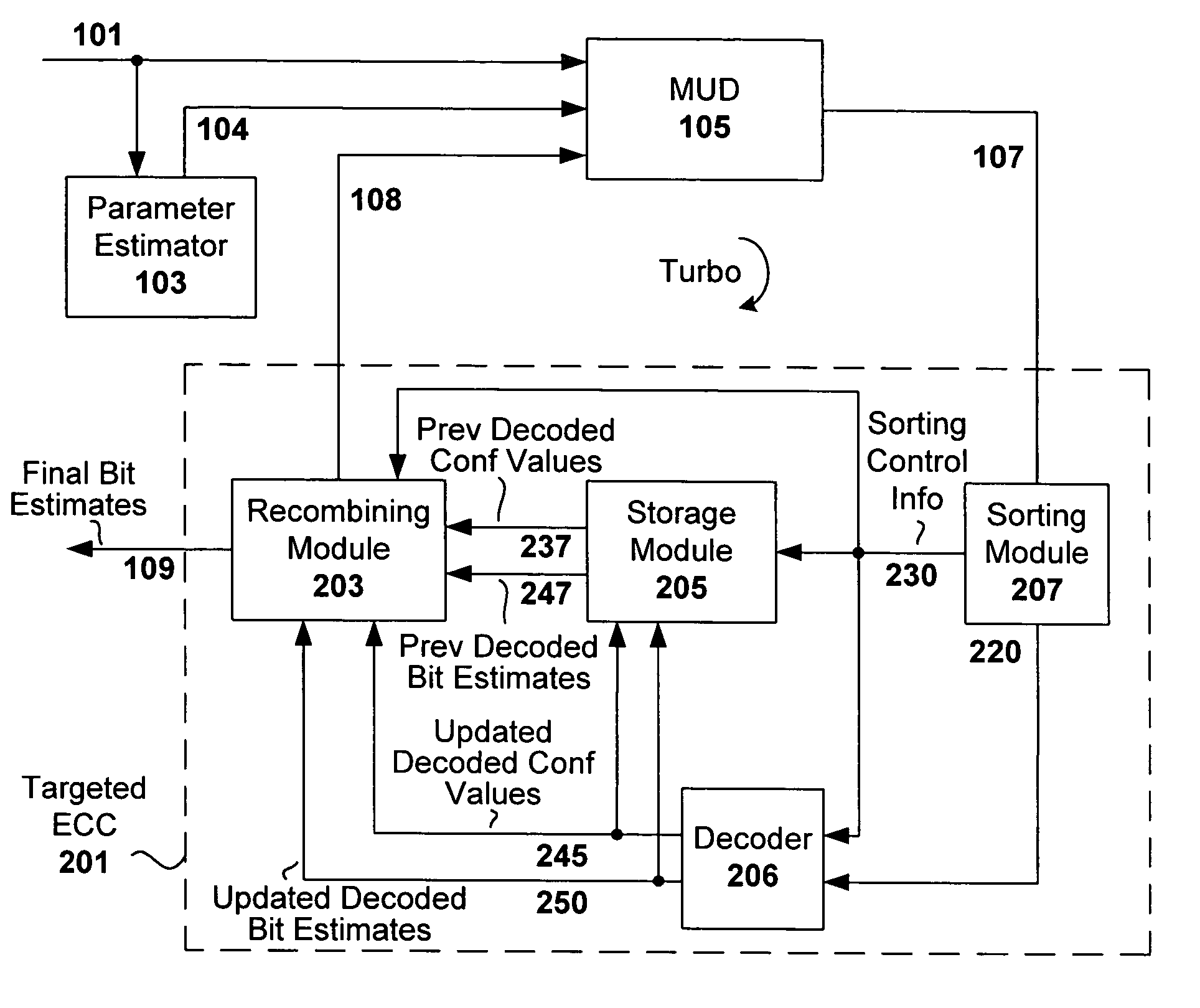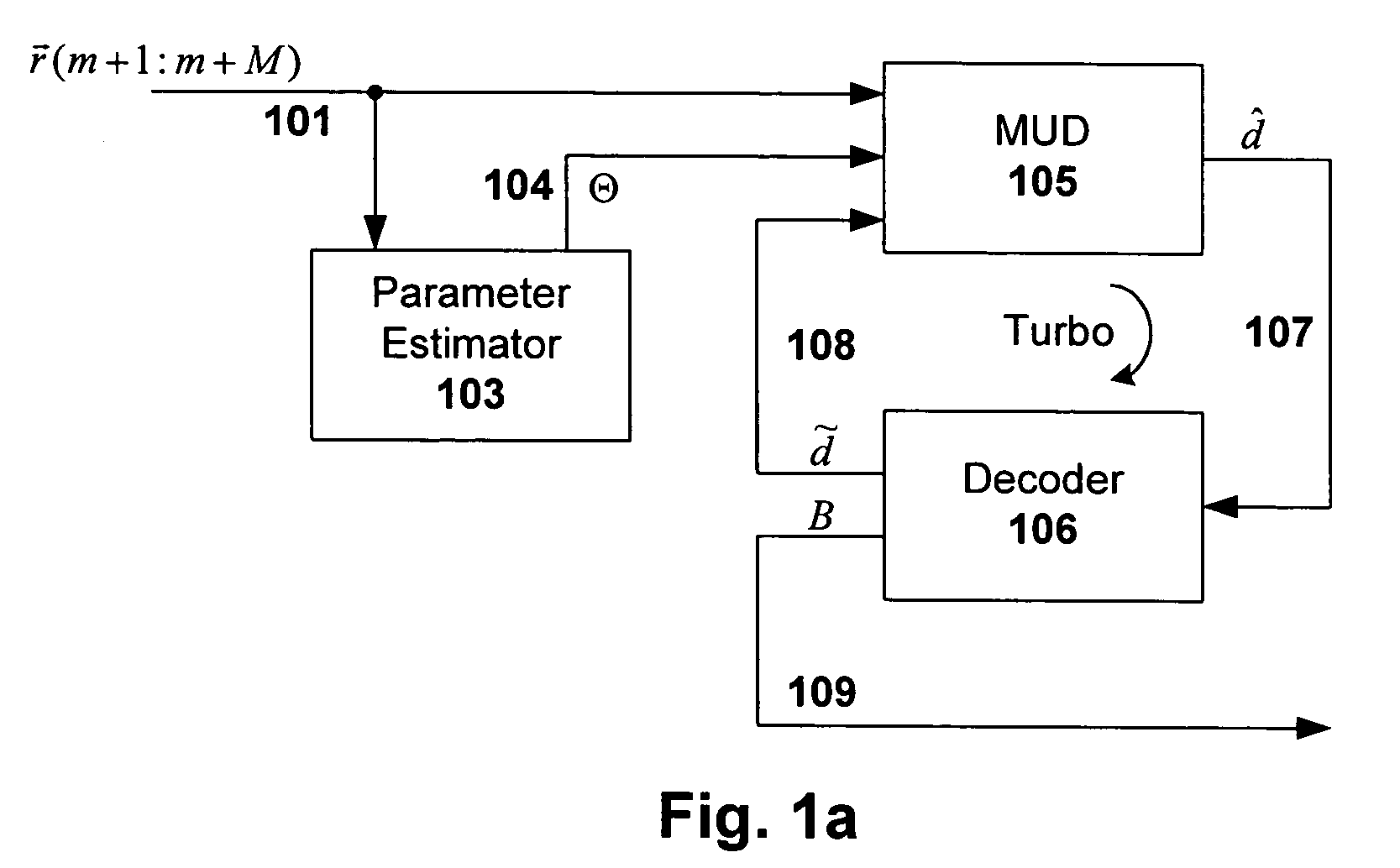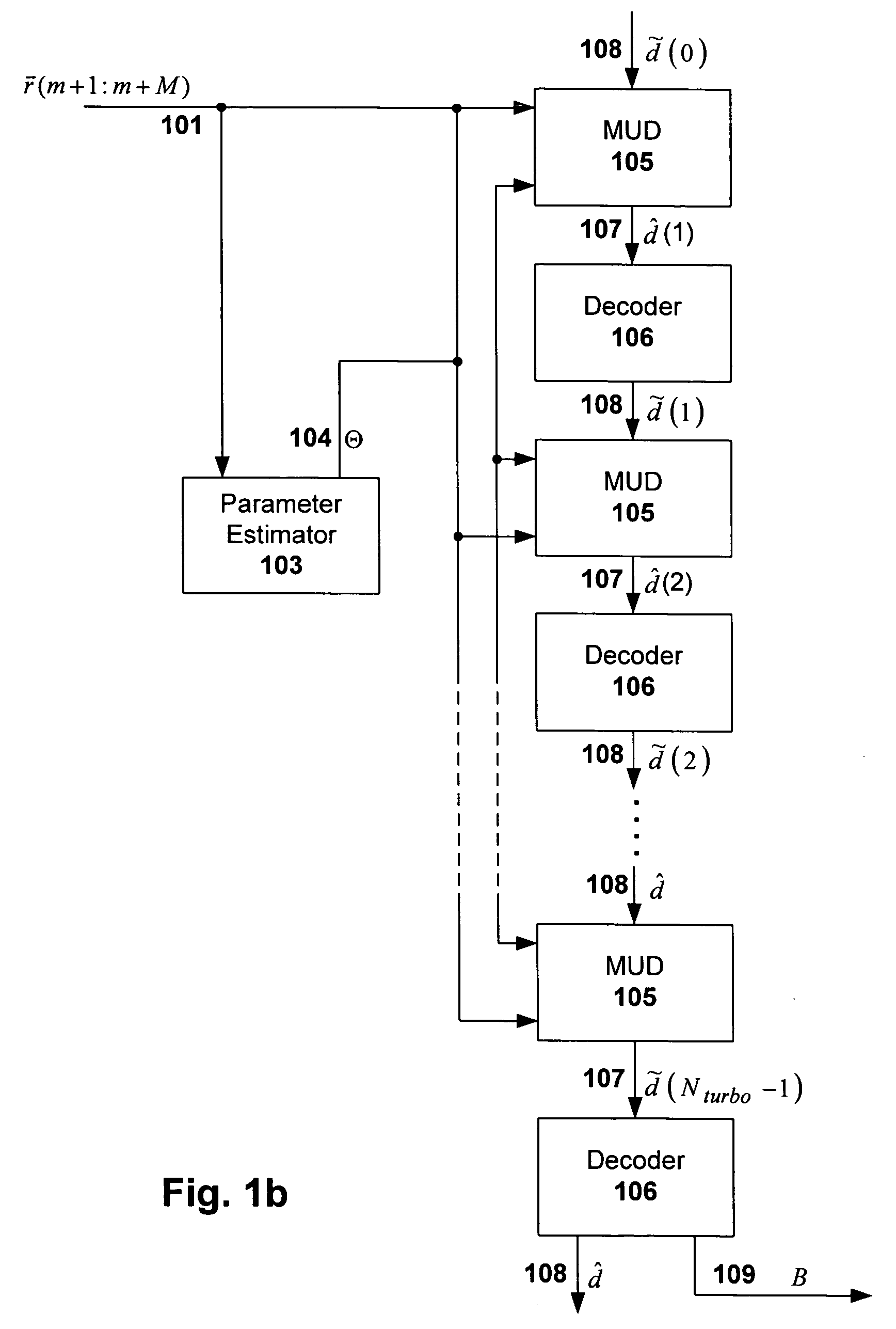Multiuser detection with targeted error correction coding
a multi-user detection and error correction technology, applied in the field of communication, can solve the problems of inability to detect signals by conventional receiver processing techniques, network performance degradation, and so on, and achieve the effect of reducing the complexity of error correction coding
- Summary
- Abstract
- Description
- Claims
- Application Information
AI Technical Summary
Benefits of technology
Problems solved by technology
Method used
Image
Examples
Embodiment Construction
[0023]Embodiments of the present invention provide a multiuser detection (MUD) and error correction decoding (ECC) processing scheme that reduces computational complexity normally associated with MUD, TurboMUD and reduced complexity MUD / TurboMUD solutions, without causing degradation in quality of service or decreasing the total throughput. Thus, high quality real-time receiver processing for overloaded multiple access systems that have error correction codes is enabled, as well as reductions in receiver energy consumption, receiver processing time, receiver hardware costs, and receiver size and weight.
[0024]In general, multiuser detection and error correction decoding algorithms are iteratively applied only to portions of the estimates that were affected by the immediately previous update process. Even though the updating is targeted so as to reduce complexity of each iteration, all of the estimates are maintained and remain candidates for future updates. As such, there is no negat...
PUM
 Login to View More
Login to View More Abstract
Description
Claims
Application Information
 Login to View More
Login to View More - R&D
- Intellectual Property
- Life Sciences
- Materials
- Tech Scout
- Unparalleled Data Quality
- Higher Quality Content
- 60% Fewer Hallucinations
Browse by: Latest US Patents, China's latest patents, Technical Efficacy Thesaurus, Application Domain, Technology Topic, Popular Technical Reports.
© 2025 PatSnap. All rights reserved.Legal|Privacy policy|Modern Slavery Act Transparency Statement|Sitemap|About US| Contact US: help@patsnap.com



